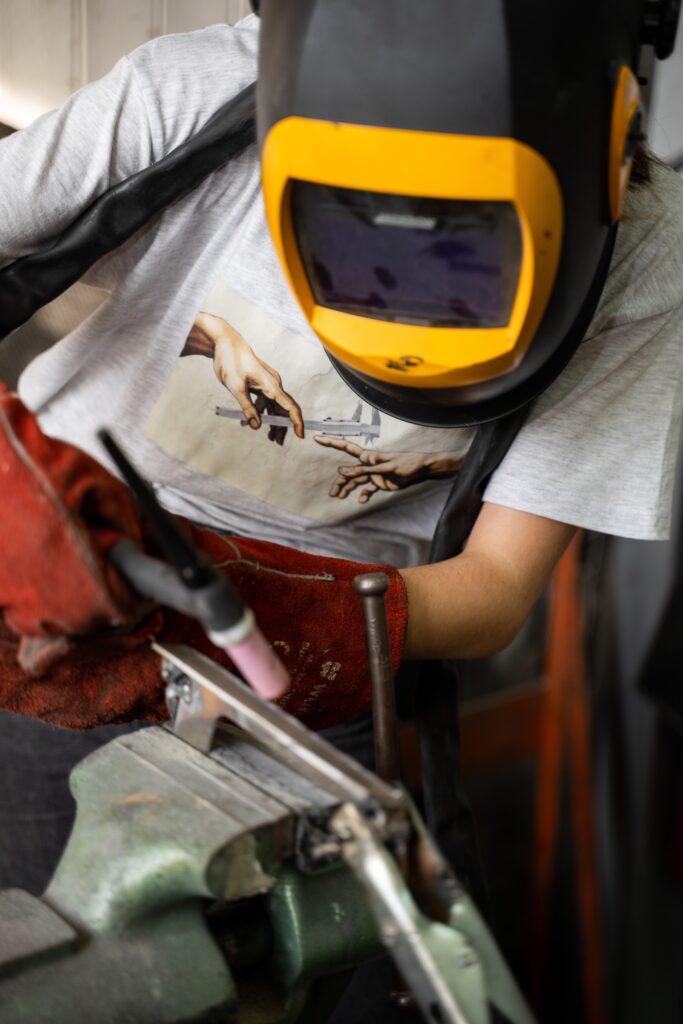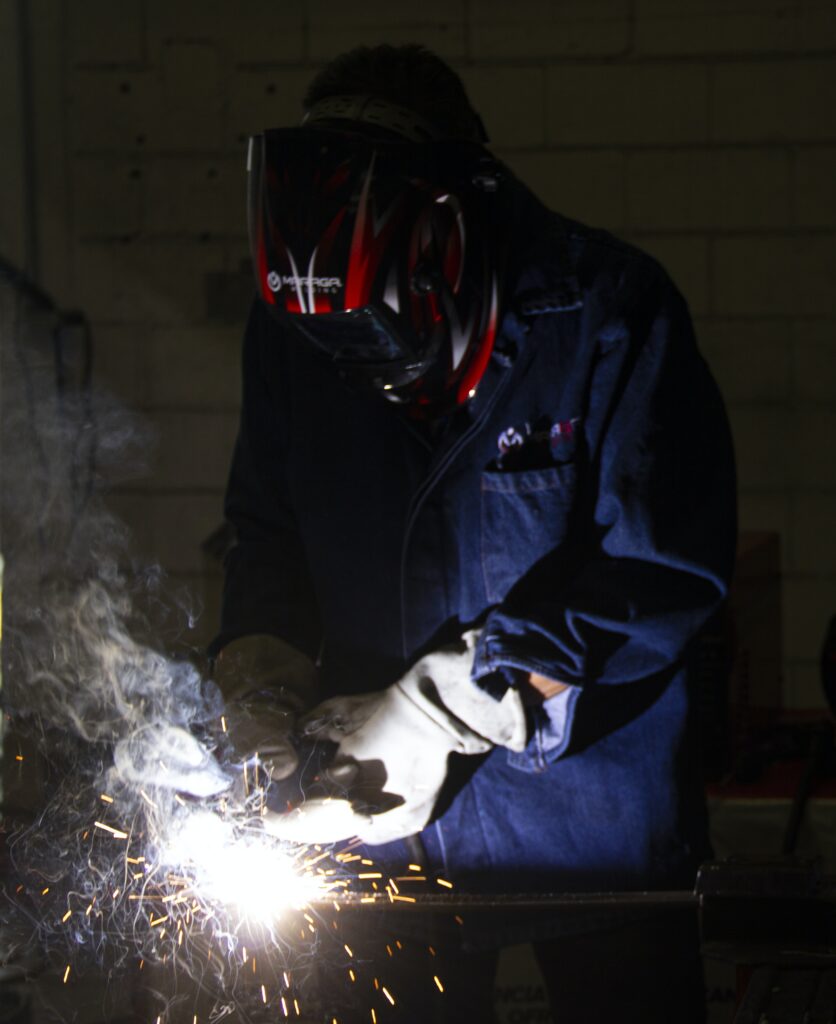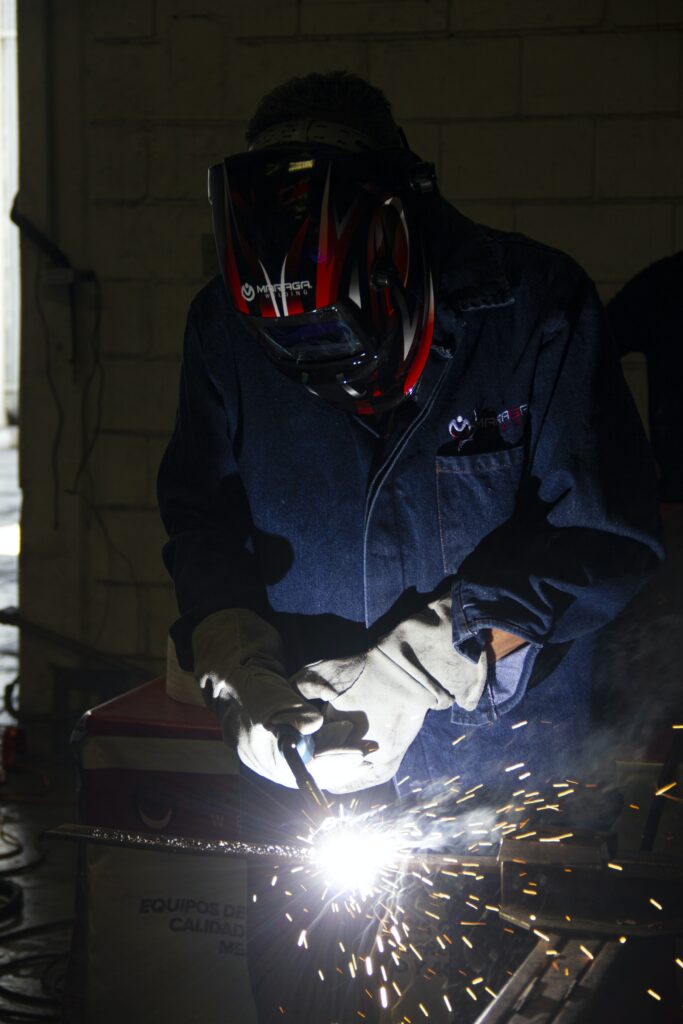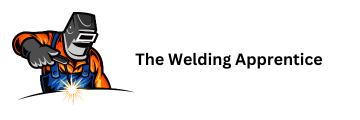You’re about to embark on an interesting journey that uncovers the gender distribution in the world of welding. Setting the stage for intriguing facts and statistics, ‘What Gender Is Most Welders?’ sheds light on the often underestimated and overlooked trends in this industry. So, brace yourself as you prepare to unravel some enriching realities that questions the prevalent stereotypes and brings a fresh perspective your way. You’re about to discover who–women or men– dominate this field of work.

Historical Background of Gender in Welding
The welding profession, like many other industries, has been fundamentally influenced by the dynamics of gender. Over time, we’ve seen shifts, changes, and progress that have shaped the face of what the industry looks like today.
Brief Overview of the Welding Profession
Welding is a skillful profession that involves joining pieces of metals using high heat. It plays a crucial role in several industries like construction, manufacturing, shipbuilding, and automobiles. As a profession that traditionally has been associated with hard labor, it has been predominantly male-dominated for a long time.
The Role of Gender in Early Welding
In the early days, welding was seen as a job especially suited for men. This view was deeply rooted in stereotypical beliefs about physical strength and the dangerous nature of the job, often placing women at the periphery of the profession. Women for a long period were effectively shut out from the welding industry due to such misconceptions and the societal norms of the time.
Shifts in Gender Demographics Over the Years
However, as societal norms evolved and women started challenging traditional roles, the gender demographics in welding also began to see a shift. World War II marked a significant period, where women stepped into jobs like welding to fill the gaps left by enlisted men. This trend, albeit slow-paced, has continued to present times with more women taking up welding as a profession.
Current Gender Demographics in Welding
Despite these shifts, the gender gap in welding remains noticeable today.
Percentage of Male and Female Welders
As it stands now, the majority of welders are male. Although more women are entering the profession, they still represent a smaller fraction of the population, making up less than 10% of all welders.
Variables Affecting Gender Ratio in Welding
Numerous factors, including societal norms, lack of encouragement and support for women, less access to training resources, and perceived physical requirements of the job, contribute to the lower number of women in this profession.
Regional Differences in Gender Distribution
It’s also worth considering that gender distribution in welding varies by region. Some regions see a relatively higher participation of women compared to others, often as a result of cultural differences, education, and training opportunities.

The Role of Education and Training
Education and training play a pivotal role in increasing gender diversity in welding.
Access to Welding Education for Different Genders
Accessible and gender-inclusive education and training are essential to ensure gender balance in the welding industry. While men often have easier access, women sometimes face challenges accessing welding education due to stereotypes and bias.
Gender Representation in Welding Training Programs
Moreover, the lower representation of women in training programs can perpetuate the cycle of underrepresentation in the industry. Efforts are needed to ensure equal representation and encouragement for women in these programs.
Impact of Gender Biases in Education and Training
Gender biases in educational institutions also impact the representation of women in welding. Stereotypical views about welding being a “man’s job” can discourage young women from considering it as a career.
Influence of Societal Attitudes and Perceptions
Societal attitudes significantly influence gender representation in welding.
Stereotypes and Misconceptions About Gender and Welding
Stereotypes and misconceptions about welding being physically strenuous and demanding have contributed to the presumption that it’s a male-dominated field. Moreover, the societal perception of welding as dirty and dangerous has discouraged many women from considering it as a career.
The Effects of Societal Expectations on Gender Representation
It’s also important to understand how societal expectations influence gender representation in welding. Traditionally, women have been pushed towards so-called ‘female-friendly’ careers, while jobs like welding have been pegged as ‘masculine’. These societal expectations significantly impact the choices that women make when choosing their careers.
Changing Attitudes Towards Women in Welding
However, attitudes are gradually changing, and recognition of women’s role in welding is increasing. More appreciation for gender diversity and recognition of women’s contributions to the field are helping to break down these stereotypes.

Physical Requirements of Welding
Welding does involve physical work, but it’s not solely about strength.
Misunderstandings About Physical Strength in Welding
One of the misconceptions is that welding is all about brute force. However, welding is a skilled craft that emphasizes fine motor skills, precision, and a steady hand over physical strength.
Examples of Successful Female Welders
There are numerous examples of successful female welders who have excelled in this profession. They prove that welding isn’t merely a measure of one’s physical strength, but more importantly, a test of skill, precision, and hard work.
Role of Skill and Precision Over Physical Strength
While physical strength is beneficial, skill and precision are the corners stones of successful welding. A good welder is defined not by strength but by their ability to weld components accurately, their knowledge of different welding techniques, and their capacity to work safely.
Impact of Gender Diversity in Welding
Gender diversity can significantly impact the industry in numerous ways.
Benefits of Gender Diversity in the Welding Industry
Gender diversity brings unique perspectives and ideas, fostering innovation and growth. A more diverse workforce can lead to better problem-solving and promotes an inclusive culture that can attract more talent into the industry.
Challenges Faced by Women in Welding
Despite the benefits, women in welding face numerous challenges, including prejudice, gender bias, lack of support, and less representation. Overcoming these challenges is essential to ensure a more inclusive and thriving welding industry.
Efforts to Increase Gender Diversity in Welding
Several professional organizations and unions are making efforts to increase gender diversity in welding. They are implementing various initiatives, such as mentoring programs, scholarships for female students, and awareness campaigns to break stereotypes about gender in welding.
Role of Unions and Professional Organizations
Professional bodies play a significant role in driving gender diversity.
Inclusivity of Different Genders in Welding Unions
Welding unions are increasingly recognizing the importance of being gender-inclusive. They are working towards providing equal opportunities and promoting inclusion within their organizations.
Efforts of Professional Organizations to Promote Gender Equality
Professional organizations are actively working on promoting gender equality in the welding industry. They are initiating various programs to support women in welding, such as providing scholarships, mentorship programs, and promoting women’s success stories.
Success Stories and Case Studies
There are numerous success stories and case studies of women breaking barriers in the welding industry. Sharing these stories can inspire other women to consider welding as a viable career option.
Case Studies of Female Welders
Several women have blazed a trail in the welding industry, making a significant impact and inspiring others.
Profiles of Successful Female Welders
There are many successful female welders who have made a name for themselves in the industry. These women have defied societal norms and proved that welding is not just a “man’s job”.
Challenges and Triumphs of Women in Welding
These women have faced several challenges on their journey, but have persevered and triumphed, proving their competence and skill in this profession.
Role Models and Inspirations for Aspiring Welders
These successful women welders serve as excellent role models and sources of inspiration for younger generations considering a career in welding.
Future Projections for Gender in Welding
The future of gender demographics in welding looks promising, albeit with challenges.
Predicted Changes in Gender Demographics
With evolving societal attitudes, more inclusive policies, and increasing recognition of diversity benefits, more women are expected to enter the welding field, slowly changing its gender demographics.
Effect of Evolving Technology on Gender in Welding
Moreover, with advancements in technology, the physical aspect of many jobs, including welding, is expected to reduce, further lowering the barriers for women to enter the industry.
The Future Role of Women in Welding
While there’s no doubt that the journey to gender equality in welding will have its obstacles, the potential role of women in shaping the future of the welding industry is immense.
Conclusion
Summarizing the State of Gender in Welding
In a nutshell, while welding remains a predominantly male profession, the times are changing. More women are entering the field, bringing with them a fresh perspective and contributing to the industry’s growth and development.
A Call to Action: Encouraging More Women in Welding
There’s a need to keep encouraging women to step into welding. With the right support, education, and equal opportunities, women can excel in this profession and help shape its future.
Final Thoughts on the Future of Welding
In the end, the future of welding lies not in strength, but in skill, precision, and diversity. In the hands of both men and women, the welding torch can create more than just solid metal joints; it can mold a more inclusive, diverse, and innovative welding industry.
